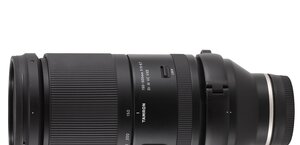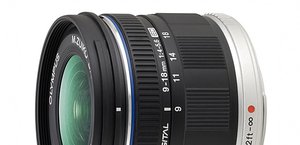Nikon Nikkor AF-P DX 10-20 mm f/4.5-5.6G VR
3. Build quality and image stabilization
In the photo below the Nikkor AF-P 10-20 mm VR is positioned between the Nikkor AF-S 85 mm f/1.8G and the Sigma A 35 mm f/1.4 DG HSM.
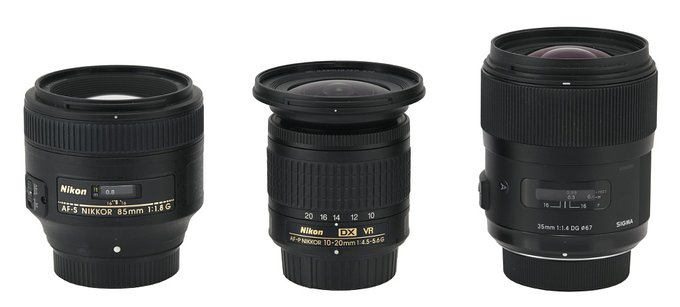 |
Please Support UsIf you enjoy our reviews and articles, and you want us to continue our work please, support our website by donating through PayPal. The funds are going to be used for paying our editorial team, renting servers, and equipping our testing studio; only that way we will be able to continue providing you interesting content for free. |
- - - - - - - - - - - - - - - - - - - - - - - - - - - - - - - - - - - - - - - - - - - - - - - -
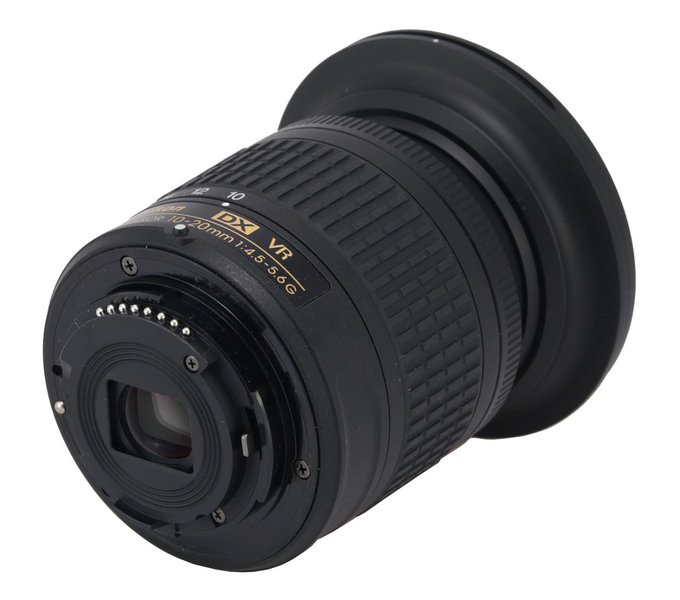 |
The next part is a zoom ring, 32 mm wide, most of its surface covered by a textured rubber ribbing. Under the ribs you see painted focal length markings at 10, 12, 14, 16 and 20 mm. The ring works with proper but sometimes uneven resistance (a bit more pronounced in the middle of the range than on both edges).
Further on you find a small, ribbed manual focus ring, just 7 mm wide. It is a focus-by-wire construction, independent from the AF/MF mode set by the camera menu. There is no switch on the lens’s barrel which might control the focusing mechanism mode. There is also no distance or depth of field scale.
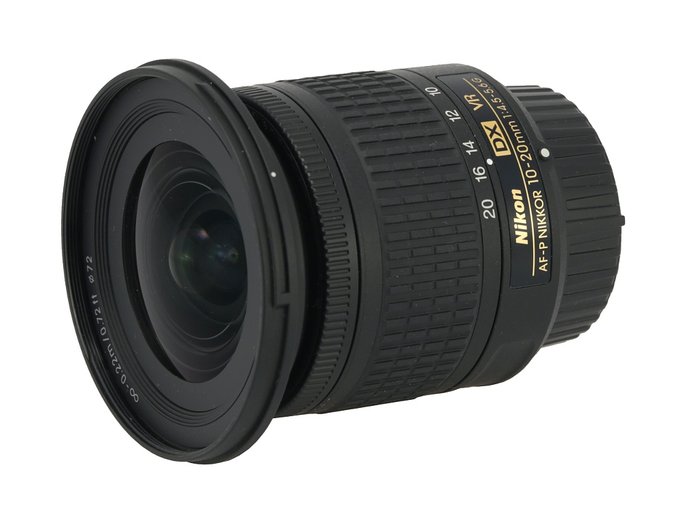 |
The whole front element system moves in and out, extending on a plastic, homogenous tube. The lens reaches its maximum length at 10mm and is the shortest at 18 mm.
 |
Buyers get in the box a snap-on LC-72 front cap, 72 mm in diameter, a rear LF-4 cap, a hood with a HB-81 mount and a soft lens case CL-1015.
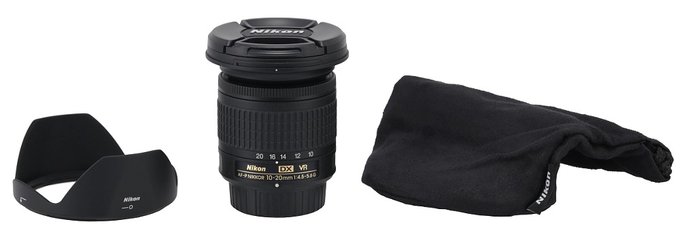 |
Optical stabilization
First, it should be mentioned that, as a part of the economizing scheme, you won’t find any stabilization switch on the barrel of the lens. You can control it only in the camera menu. Apart from the autofocus, it is another reason why the lens doesn’t cooperate with older Nikon cameras; their menus don’t feature any stabilization control option.Of course you can always discuss the usefulness of stabilization in an ultra wide angle lens. I’ve never tried to hide the fact that for me personally it is an unnecessary complication. It only raises the price of the lens, without providing any real gains. A decision to stabilize the Nikkor 10-20 mm is rather strange: after all such a cheap lens is supposed to encourage amateur photographers to buy a device a bit more interesting than the one you get with a camera. In my opinion the encouragement would work even better if the price was lower; if you remove a stabilization switch from the barrel in order to save money you might as well skip the whole stabilization altogether and sell a cheaper lens as a result. I bet the number of its users would be much higher.
As the stabilization system is included we of course had to test it and find out whether it is as efficient as 3.5 stops of shutter speed the producer claims. In order to do so we set the lens at 20 mm and took several dozen photos with exposure times ranging from 1/30 to 1 second and the stabilization switched on and off. For every set of photos we determined a percentage of out-of-focus shots; then we presented it in a form of a graph of exposure time which was expressed in EV (with 0 EV being an equivalent of 1/25 of a second).
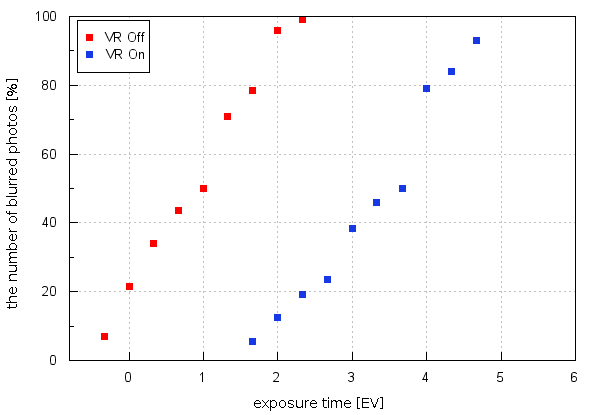
As you see, the maximum distance between both curves reaches about 2.7 EV and so we assess the efficiency of the tested Nikkor’s vibration reduction unit. It is a result below the declarations of the producer, quite average for contemporary standards, but still higher than the result of the Canon 10-18 mm IS STM.




